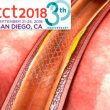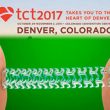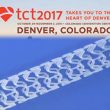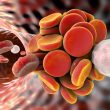This randomized, controlled, multicenter and blind study compared the second generation of bio-absorbable stent platform with the everolimus-eluting Xience. 501 patients were randomized 2: 1 (Absorb / Xience) with de novo lesions in native coronary arteries with a reference diameter between 2.25 and 3.8 mm estimated by quantitative angiography. All the patients underwent IVUS and...
What is an angioplasty?
An angioplasty is a procedure performed to improve blood flow in the body’s arteries and veins. In an angioplasty procedure, imaging techniques are used to guide a balloon tipped catheter (a very thin tube) into an artery or a vein and advance it to where the vessel is blocked or narrowed. The balloon is then...
TCT 2018 | ABSORB IV: Much Life Left for Bioresorbable Scaffolds
Previous studies have documented higher rates of adverse events with bioresorbable scaffolds (ABSORB) compared with metallic drug-eluting stents (DES). However, these studies included lesions smaller than recommended for these scaffolds and a suboptimal implantation technique. The ABSORB IV study, presented by Dr. Stone at TCT 2018 and published simultaneously in The Lancet, randomized patients to polymeric everolimus-eluting scaffold Absorb...
TCT 2017 | SENIOR: DES with a Bioresorbable Polymer and Short Dual Antiplatelet Therapy in Elderly Patients
Courtesy of the SBHCI. This study sought to assess the safety and efficacy of an everolimus-eluting stent with a biodegradable polymer (SYNERGY II) vs. a conventional stent (REBEL) in patients >75 years old with short duration of dual antiplatelet therapy. Before randomization, investigators recorded the planned duration of dual antiplatelet therapy (1 month for stable patients and 6 months...
TCT 2017 | REDUCE: 3 vs 12 Months of Dual Antiplatelet Therapy with the New Combo DES
Courtesy of SBHCI. This new device has, on one hand, an abluminal sirolimus coating, and on the other hand, a luminal CD34 antibody coating for EPC capturing, to potentially accelerate post-PCI reendothelization. Between 2014 and 2016, the study included 1496 patients undergoing acute coronary syndrome (ACS), receiving the new COMBO stent. These patients were randomized...
Absorb IV: Bioresorbable Scaffolds with an Optimized Implantation Technique
Courtesy of the SBHCI. The Absorb IV trial randomized 2604 patients in a 1:1 ratio to receive an Absorb everolimus-eluting bioresorbable scaffold or a Xience stent. With the aim of minimizing the problems observed in previous studies, the Absorb IV protocol excluded small caliber (<2.5 mm) vessels and included mandatory aggressive pre-dilation followed by non-complacent balloon post-dilation. Patients could...
ABSORB II: No Benefits from Scaffolds After Complete Bioresorption
Courtesy of the SBHCI. The ABSORB II study sought to assess the mechanical properties of everolimus-eluting bioresorbable scaffolds, such as the increase in minimal lumen area and the recovery of the vasomotor properties of the treated artery. Last year saw the publishing of negative results for the primary endpoints, registering a higher rate of complications at...
Very Late Thrombosis in Bioresorbable Scaffolds
The presence of a metallic device interrupts normal laminar flow and creates an artery environment that favors thrombosis, leaving the vessel vulnerable to very late thrombosis. Dual antiplatelet therapy, a better implantation technique, and several improvements in new drug-eluting stents (DES) (thinner struts, and higher polymer stability and biocompatibility) have lowered significantly the incidence of...
Everolimus DES are more effective and less costly than conventional BMS
Courtesy of Dr. Guillermo Migliaro. Drug eluting stents (DES) represented the greatest technological advance in the treatment of instent restenosis from conventional metallic stents (BMS), especially cobalt chromium everolimus eluting stents (CoCr EES), which have shown an excellent profile, and are mostly safer, compared to first generation DES. Indeed, several randomized studies and meta-analyzis have...
Discover which were the best e-posters
FIRST PLACE 114 THE IMPACT OF POST-PROCEDURAL ASYMMETRY, EXPANSION AND ECCENTRICITY OF BIORESORBABLE EVEROLIMUS-ELUTING SCAFFOLD AND METALLIC EVEROLIMUS-ELUTING STENT ON CLINICAL OUTCOMES IN THE ABSORB II TRIAL PANNIPA SUWANNASOM1; YOHEI SOTOMI1; RAFAEL CAVALCANTE E SILVA2; CARLOS MACAYA3; JOHN A ORMINSTON4; JONATHAN HILL5; MACIEJ LESIAK6; BERNARD CHEVALIER7; PATRICK W SERRUYS8; YOSHINOBU ONUMA2 1.ACADEMIC MEDICAL CENTER, HOLLAND;...








